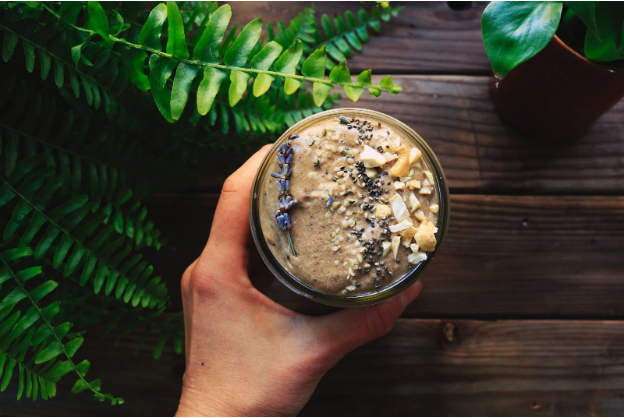fitness
Whey Protein Isolate vs. Concentrate: A Complete Guide
On This Page

Choosing a whey protein powder? Here's everything you need to know about whey concentrate and whey isolate.
Whey protein is one of the most popular forms of protein powder available. A favorite of body builders, fitness enthusiasts, and many people just looking to maintain healthy protein intake, whey is in high demand, with a global market value of about USD 5.33 billion in 2021. Whey protein can be an easy and delicious way to help you reach your health and fitness goals.
First thing's first: what is whey and why is whey protein so popular?
Whey is the liquid leftover when you use the curds in milk to make cheese. For a long time the whey would be discarded during the cheese-making process. Eventually, however, farmers began to see the value and the benefits that whey could provide when they discovered it has an incredibly high protein content.
Milk contains two proteins: whey and casein. While casein makes up 80% of the proteins in milk, our bodies absorb it more slowly than other proteins. Whey makes up the remaining 20%, and our bodies absorb it much more quickly. Once the curds (casein) and whey are separated, the whey is then pasteurized, purified, concentrated, and spray-dried into a powder.
Whey is a complete protein, which means it contains all nine essential amino acids that our bodies can’t produce on their own: histidine, isoleucine, leucine, lysine, methionine, phenylalanine, threonine, tryptophan, and valine. For this reason, whey can be particularly helpful to those looking to add protein to their diets to fill in nutritional gaps, and for those who may, due to dietary restrictions, not be consuming a healthy amount of protein regularly.
Whey protein has become the go-to for many for several reasons: it’s affordable (it’s often the most cost effective option you’ll see), absorbs quickly, and is a complete protein, not to mention the taste. Since it comes in a variety of flavors, whey protein can be mixed into various smoothie and shake recipes, whether you’re craving a sweet, post-workout treat, or want to throw it into a breakfast smoothie to make it more filling.
That said, if you do decide to purchase whey protein, you’ll be confronted with several options, starting with whether to choose a whey protein concentrate or whey protein isolate. Here’s all the information you need to decide which is right for you.
How do whey protein isolate and concentrate differ?
Whey protein isolate is a more refined version of whey concentrate, which creates some differences between the two which may be important for some.
Refinement and filtration
The biggest difference between whey protein isolate and concentrate is the level of refinement and filtration. Isolates are processed for longer so they have a higher (approximately 90% by weight) concentration of protein, with less carbs, lactose, and fat. Because of this, whey protein isolate has more protein per serving than concentrate, which is dried immediately after being collected and has a lower protein concentration (approximately 80% by weight). By that math, 30g of whey isolate powder will provide about 27g protein while a whey concentrate powder will provide about 24g protein.
Nutritional content
In addition to protein, whey protein provides a few essential nutrients. According to the USDA, a 25.3g serving of whey protein isolate contains the following nutrition:
- 20g protein
- 100mg calcium (about 10% of daily needs)
- 190mg potassium
- 85mg sodium
A lesser known benefit of whey protein is its properties that support the immune system and antioxidant capacity in the body. Studies show that consuming whey protein increases levels of glutathione, often called the “master antioxidant” in the body. This is thanks to whey’s high concentration of the double amino acid compound called cystine. Also present in whey is lactoferrin, an immune-supporting compound known to support immunity.
Lactose content
Lactose intolerance occurs when the small intestine does not have sufficient lactase enzyme to digest milk sugar (lactose), resulting in bloating, digestive discomfort, and in more sensitive cases, changes in bowel movements. This is different from a milk allergy, in which any form of whey protein (concentrate or isolate) would not be safe.
Whey protein concentrate contains around 4-8% lactose, while whey protein isolate powders may contain up to about 1% lactose. Since whey isolate is lower in lactose, it may be a better option for people who are sensitive to lactose. It really depends on the person. With that said, for those who can’t tolerate even the smallest amounts of lactose, it is best to avoid whey altogether and choose a plant-based protein or collagen protein instead.
Digestibility
Both whey concentrate and isolate are easily digestible proteins that the body can put to use quickly. In fact, whey protein has a Protein Digestibility Corrected Amino Acid Score (PDCAAS) of 1, signifying its ability to be efficiently digested and incorporated into proteins in the body. This is a big reason why whey is so popular with athletes. Isolate may be considered to be slightly more digestible since it has a higher concentration of protein and less lactose, but this may only make a noticeable difference in those sensitive to lactose.
Amino acids
The same amino acids exist in whey protein concentrate and isolate. Although some other factors like lactose content are different, both protein options provide the same ratio of amino acids.
Cost and availability
While isolates can be slightly more expensive than concentrates, isolates often provide a bit more protein, since the amount of protein per serving is higher. This often makes them comparable in terms of cost per gram of protein. However, brand costs vary widely. You can find whey protein online, in health food stores, and in most grocery stores.
Is whey protein isolate healthier than concentrate?
With everything we’ve reviewed so far about whey protein isolate versus concentrate, you can see that both options are healthy. Both provide protein that is easy to digest and complete with all 9 essential amino acids. If you tolerate whey, you can incorporate either option as an excellent part of your daily meals to meet your protein needs. Keep in mind that protein powders in general can have added ingredients. So whether choosing a whey concentrate or isolate, always read the labels and check the ingredients list to make sure any additional ingredients are suitable for you.
Whey protein uses
Whey protein is not just for athletes and bodybuilders. It is a popular and helpful option amongst people looking to conveniently meet their protein needs.
Muscle development and recovery
Whey protein isolate and concentrate have similar benefits for athletic performance, muscle synthesis, strength, and recovery. Because of its efficient breakdown and incorporation into the body, whey protein is an excellent fuel during training as well as post-workout for muscle synthesis and recovery.
These benefits of whey also extend to older adults, who can find a benefit in the easy digestibility of whey protein. Protein needs increase in older adulthood by at least 0.2 g/kg of body weight due to reduced efficiency of protein synthesis. In addition, digestion also declines with age. So getting protein in a highly digestible form like whey protein can be a helpful option for aging adults.
Meal replacement
If you are looking for a quick and easy meal with convenient, no-prep protein, whey protein isolate or concentrate may be at the top of your list. Whey protein can be added to shakes or smoothies or even baked goods, no-bake treats, and more for creative ways to increase protein intake. To make your whey protein part of a full, well-balanced meal, you want to make sure you consume whole foods along with the whey to provide essential minerals, vitamins, fiber, fats, and carbs. For example, a well-balanced whey protein meal replacement shake might include 1 scoop of whey powder, 1-2 tbsp peanut butter, 1 cup fruit, a handful of leafy greens, and your milk or liquid of choice.
While whey protein can be a convenient option to get protein, it should not be used to replace all protein in your diet. Getting a variety of whole food protein sources in addition to your whey protein can help you better meet your daily nutrition needs.
How to choose between whey protein isolate and whey protein concentrate
When choosing between whey protein isolate and whey protein concentrate, consider your individual needs, such as how well you tolerate lactose. Cost may also be a factor, although as stated before, the cost per gram of protein in either option is often comparable.
If you desire to choose based on fat and carb content, note that pure isolate generally contains 0g fat and carbs, whereas whey concentrate often contains about 2-3g carbs and fat each per serving.
Whether choosing whey protein isolate or whey protein concentrate, check the labels for added ingredients. Powders can come unflavored or flavored. Flavored powders often contain a source of sweetness, whether added sugar or low calorie sweeteners, such as sucralose, acesulfame, stevia, or monk fruit, so keep that in mind if you have a preference for a certain type of sweetener.
Care/of carries both vanilla as well as chocolate flavored whey protein isolates, both using grass-fed whey. Each contains a small amount of added sugar and natural flavorings and ingredients to provide the perfect creamy texture and just-sweet-enough taste.
If you are still in doubt of whether to choose whey isolate or concentrate, you can ask a registered dietitian for a personalized recommendation.
The bottom line
When you’re choosing a whey protein powder, consider whether the amounts of lactose, fat and carbs matters to you. The good news is that both whey concentrate and isolate provide highly digestible protein to support muscle building and recovery. Whether you decide on isolate or concentrate, make sure you’re choosing one with high quality, well-sourced ingredients, so you can rest assured that the protein powder you’re taking to help support your health goals is actually good for you.



